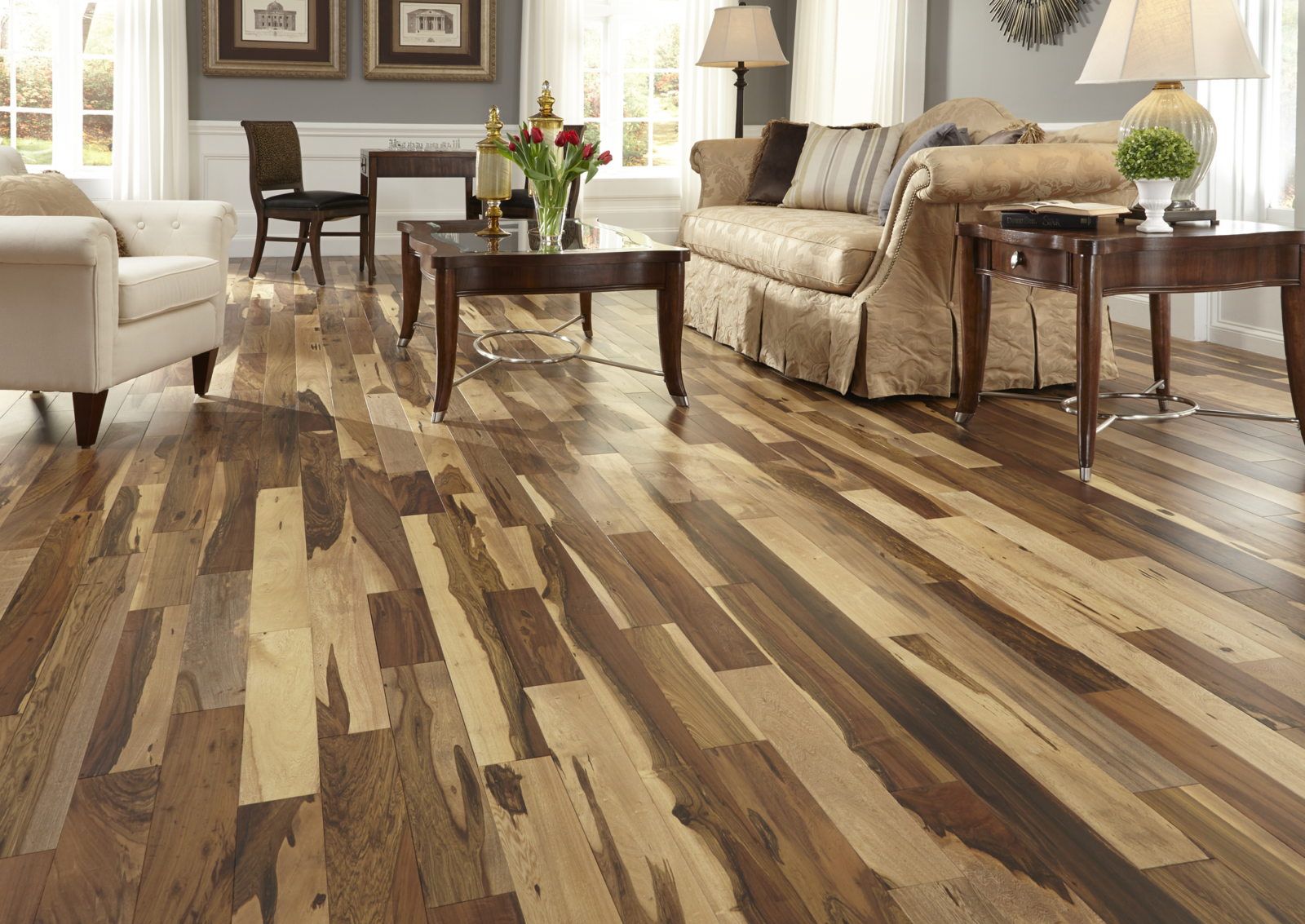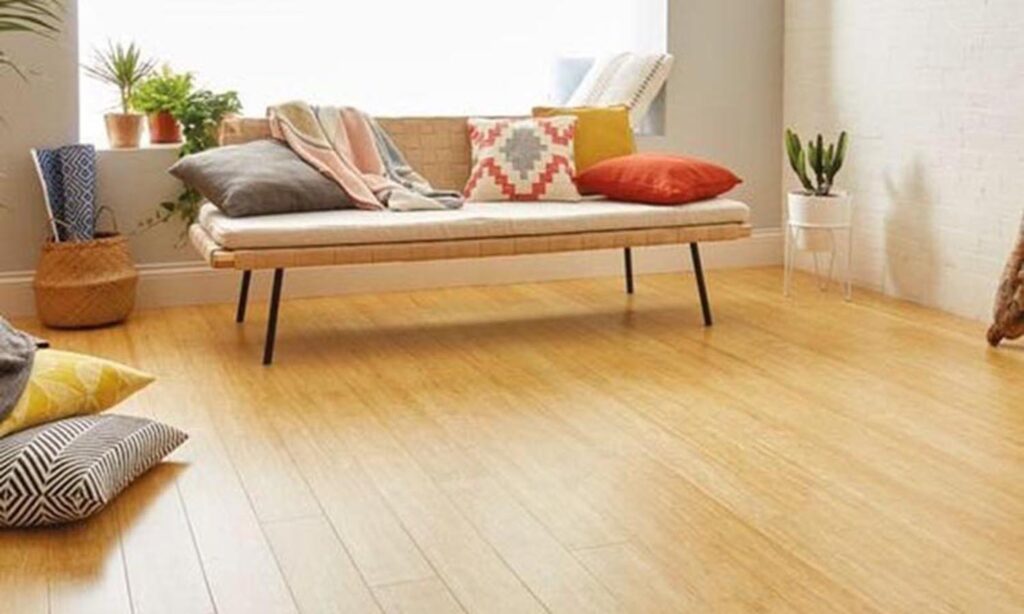Bamboo flooring has become an increasingly popular choice for homeowners looking for an eco-friendly, stylish, and durable flooring option. With its unique appearance and sustainable benefits, bamboo is a great alternative to traditional hardwood. Let’s explore what makes bamboo flooring an excellent choice, how to select the best quality and tips for installation and maintenance.
Understanding Bamboo Flooring
Bamboo flooring is crafted from the bamboo plant, which is technically a type of grass, not wood. Despite this, bamboo offers a similar aesthetic to traditional hardwood flooring and is available in various styles, colors, and finishes. The most common types of bamboo flooring are horizontal, vertical, and strand-woven, each offering distinct visual characteristics and performance attributes.
Horizontal bamboo flooring showcases the natural grain and knuckles of the bamboo, creating a traditional and rustic look. The bamboo stalks are sliced into thin strips and then glued together horizontally, resulting in a flooring option that highlights the plant’s natural beauty. This type of flooring is typically softer than other bamboo options but still provides adequate durability for many residential applications.
Vertical bamboo flooring presents a more uniform and sleek appearance. In this style, the bamboo strips are glued together vertically, creating a lined, more consistent grain pattern. Vertical bamboo is slightly harder than horizontal bamboo, making it a good option for areas with moderate foot traffic.
Strand-woven bamboo flooring is the most durable and hardest type of bamboo flooring available. It is made by shredding bamboo fibers and compressing them with resin under high pressure. This process results in a flooring material that is twice as hard as oak and highly resistant to dents and scratches. Strand-woven bamboo comes in a variety of colors and finishes, offering both aesthetic versatility and robust performance.
In addition to these types, bamboo flooring is available in various finishes, such as natural, carbonized, and stained. Natural bamboo retains its light, blonde color, while carbonized bamboo undergoes a heat treatment process that darkens the material, giving it a rich, amber hue. Stained bamboo can be finished in a wide range of colors, allowing for more customization to match your decor.
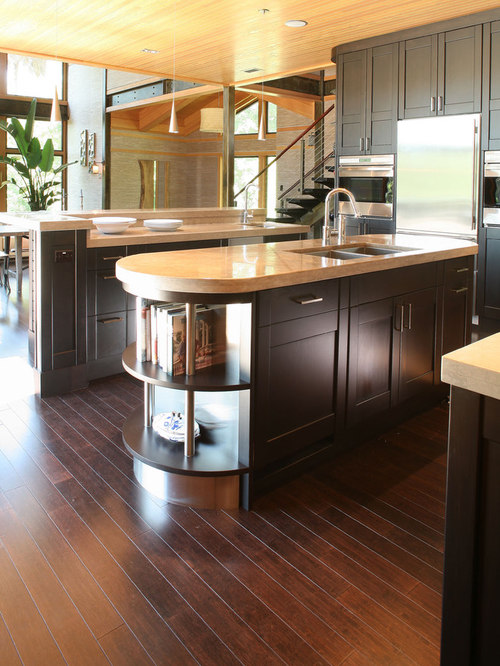
Benefits of Bamboo Flooring
Bamboo flooring offers numerous benefits that make it an attractive option for homeowners. From its eco-friendly nature to its durability and aesthetic appeal, bamboo flooring is a versatile choice for various interior design styles and needs.
One of the primary benefits of bamboo flooring is its sustainability. Bamboo is a highly renewable resource, with some species capable of growing up to 3 feet per day. Unlike traditional hardwood trees, which can take decades to mature, bamboo reaches maturity in just 3-5 years. This rapid growth rate makes bamboo an eco-friendly alternative to hardwood flooring, helping to reduce deforestation and promote sustainable forestry practices.
Durability is another significant advantage of bamboo flooring. Strand-woven bamboo, in particular, is incredibly hard and resistant to wear and tear. Its density and strength make it suitable for high-traffic areas and homes with pets and children. Even horizontal and vertical bamboo flooring options offer respectable durability, making them suitable for various residential applications.
The aesthetic versatility of bamboo flooring is also worth noting. Available in multiple styles, colors, and finishes, bamboo can complement a wide range of interior design schemes. Whether you prefer a modern, minimalist look or a more traditional, rustic appearance, bamboo flooring can be tailored to suit your taste.
Ease of maintenance is another key benefit of bamboo flooring. Regular sweeping or vacuuming, along with occasional mopping with a damp mop, is typically sufficient to keep bamboo floors looking their best. Unlike some other types of flooring, bamboo does not require special cleaning products or complicated maintenance routines.
Bamboo flooring also offers allergy-friendly properties. It does not trap dust, pollen, or other allergens as easily as carpet, making it a healthier choice for those with allergies or respiratory issues. Its smooth surface is easy to clean, helping to maintain a healthier indoor environment.
Lastly, bamboo flooring is often cost-effective compared to traditional hardwood. While the price can vary depending on the type and quality of the bamboo, it generally provides a more affordable option without compromising on style or durability. This makes it an appealing choice for budget-conscious homeowners looking for a high-quality flooring solution.
Choosing the Best Quality Bamboo Flooring
Selecting the best quality bamboo flooring involves considering several factors, from the type of bamboo and its construction to the certifications and warranties offered by the manufacturer. Here are some essential tips to help you make an informed decision.
First and foremost, pay attention to the type of bamboo flooring. As mentioned earlier, strand-woven bamboo is the hardest and most durable option, making it ideal for high-traffic areas. Horizontal and vertical bamboo are also good choices but may not offer the same level of durability as strand-woven bamboo. Consider the specific needs of your space when selecting the type of bamboo flooring.
Another crucial factor is the source of the bamboo. High-quality bamboo flooring is typically made from Moso bamboo, a species known for its strength and density. Ensure that the bamboo used in the flooring is harvested at the right age (usually 5-6 years) for optimal hardness and durability. Younger bamboo is softer and less durable, while older bamboo can be too brittle.
Look for bamboo flooring that is certified by reputable organizations. Certifications such as the Forest Stewardship Council (FSC) ensure that the bamboo is sourced from sustainably managed forests. Additionally, certifications like FloorScore or GREENGUARD indicate that the flooring meets strict indoor air quality standards, free from harmful levels of volatile organic compounds (VOCs).
The construction and manufacturing process also play a significant role in the quality of bamboo flooring. Strand-woven bamboo, for example, involves a complex process of shredding and compressing bamboo fibers with resin, resulting in a highly durable product. Ensure that the flooring is made using high-quality adhesives and finishes to enhance its durability and appearance.
Consider the finish and coating of the bamboo flooring. A high-quality finish not only enhances the aesthetic appeal of the flooring but also provides an additional layer of protection against scratches, stains, and wear. Look for flooring with multiple coats of polyurethane or aluminum oxide finish, which are known for their durability and resistance to wear.
Lastly, check the warranty offered by the manufacturer. A good warranty is a sign of confidence in the product’s quality and durability. Look for bamboo flooring that comes with a comprehensive warranty covering issues such as wear, structural integrity, and manufacturing defects. A longer warranty period is generally an indicator of higher quality.
Installation Tips for Bamboo Flooring
Proper installation is crucial for ensuring the longevity and performance of your bamboo flooring. While it’s possible to install bamboo flooring yourself, hiring a professional installer can help avoid common pitfalls and ensure a flawless finish. Here are some essential tips for a successful bamboo flooring installation.
Acclimate the flooring: Before installation, it’s important to acclimate the bamboo flooring to the environment of the room where it will be installed. Store the flooring in the room for at least 72 hours to allow it to adjust to the temperature and humidity. This helps prevent expansion and contraction issues after installation.
Prepare the subfloor: A clean, dry, and level subfloor is essential for a successful installation. Remove any existing flooring, debris, or adhesive residue. Use a moisture meter to check the moisture levels of the subfloor and ensure they are within the acceptable range for bamboo flooring. If necessary, use a self-leveling compound to create a smooth surface.
Choose the right installation method: Bamboo flooring can be installed using various methods, including nail-down, glue-down, and floating. The best method depends on the type of bamboo flooring and the conditions of the subfloor. Nail-down and glue-down methods provide a more permanent and stable installation, while floating floors are easier to install and can be a good option for DIY enthusiasts.
Install a moisture barrier: If you’re installing bamboo flooring over a concrete subfloor, it’s important to install a moisture barrier to prevent moisture from seeping into the bamboo. Use a high-quality vapor barrier or underlayment with a built-in moisture barrier to protect the flooring from moisture-related issues.
Plan the layout: Before starting the installation, plan the layout of the flooring to ensure a balanced and visually appealing appearance. Measure the room and mark the starting points, considering the direction of the planks and any obstacles such as doorways or vents. Stagger the end joints of the planks to create a more natural look and increase stability.
Follow manufacturer’s instructions: Always follow the manufacturer’s instructions for installation, as different types of bamboo flooring may have specific requirements. Pay attention to details such as expansion gaps, adhesive application, and fastening methods. Proper installation according to the manufacturer’s guidelines ensures the best performance and longevity of the flooring.
Maintenance and Care for Bamboo Flooring
Proper maintenance and care are essential to keep your bamboo flooring looking beautiful and extend its lifespan. While bamboo flooring is relatively low-maintenance, following these tips will help you protect and preserve its appearance.
Regular cleaning: Regular cleaning is important to prevent dirt and debris from scratching the surface of the bamboo flooring. Sweep or vacuum the floor frequently to remove dust and particles. Use a soft-bristle broom or a vacuum with a hardwood floor attachment to avoid damaging the finish.
Avoid excessive moisture: While bamboo flooring is more moisture-resistant than traditional hardwood, it’s still important to avoid excessive moisture. Wipe up spills immediately with a dry or slightly damp cloth. Avoid using wet mops or steam cleaners, as excessive moisture can cause the bamboo to swell or warp.
Use protective pads: To prevent scratches and dents, place protective pads under the legs of furniture, especially heavy pieces. When moving furniture, lift it instead of dragging it across the floor. Use area rugs or mats in high-traffic areas, such as entryways and hallways, to minimize wear and tear.
Maintain humidity levels: Bamboo flooring can expand and contract with changes in humidity. To prevent issues like gaps or buckling, maintain consistent humidity levels in your home. Use a humidifier during dry winter months and a dehumidifier during humid summer months if necessary. Aim for a relative humidity level between 40% and 60%.
Refinish when necessary: Over time, your bamboo flooring may show signs of wear, such as scratches or a dull finish. Depending on the type of bamboo and finish, you may be able to sand and refinish the floor to restore its original beauty. Consult with a professional or follow DIY guidelines for refinishing if you feel confident in your skills.
Avoid harsh chemicals: When cleaning your bamboo flooring, use products specifically designed for wood or bamboo. Avoid harsh chemicals, abrasive cleaners, and products containing ammonia or vinegar, as they can damage the finish. A damp mop with a mild bamboo floor cleaner is typically sufficient to keep the floor clean.
Comparing Bamboo to Other Flooring Options
When considering bamboo flooring, it’s helpful to compare it to other popular flooring options to understand its advantages and potential drawbacks. Here’s how bamboo stacks up against hardwood, laminate, and vinyl flooring.
Bamboo vs. hardwood: Bamboo flooring is often compared to traditional hardwood due to its similar appearance and performance. One of the main advantages of bamboo over hardwood is its sustainability. Bamboo is a highly renewable resource, whereas hardwood trees take decades to mature. Additionally, strand-woven bamboo is generally harder and more durable than many hardwood species, making it more resistant to dents and scratches. However, bamboo can be more susceptible to moisture damage compared to some hardwoods, so it’s important to maintain proper humidity levels.
Bamboo vs. laminate: Laminate flooring is a popular budget-friendly alternative to hardwood and bamboo. While laminate flooring can mimic the look of bamboo, it is typically less durable and can’t be refinished if damaged. Bamboo flooring, especially strand-woven bamboo, offers superior durability and the ability to be refinished. Additionally, bamboo is an eco-friendly option, whereas laminate flooring is made from synthetic materials and may not be as environmentally friendly.
Bamboo vs. vinyl: Vinyl flooring is known for its water resistance and durability, making it a popular choice for areas prone to moisture, such as kitchens and bathrooms. While bamboo flooring is also durable, it is not as water-resistant as vinyl and may not be suitable for high-moisture areas. However, bamboo offers a more natural and aesthetically pleasing appearance compared to vinyl, which can look artificial. Bamboo is also an eco-friendly choice, whereas vinyl is made from synthetic materials.
Bamboo vs. engineered wood: Engineered wood flooring is similar to bamboo in that it consists of multiple layers, with a real wood veneer on top. Both bamboo and engineered wood offer stability and resistance to moisture compared to solid hardwood. However, strand-woven bamboo is generally harder and more durable than most engineered wood options. Bamboo also has the advantage of being more sustainable, as it is made from a rapidly renewable resource.
Bamboo vs. cork: Cork flooring is another eco-friendly option, made from the bark of cork oak trees. Both bamboo and cork offer sustainability benefits, but they have different performance characteristics. Cork is softer and more resilient, providing a cushioned feel underfoot. However, it is less durable and more prone to dents and scratches compared to strand-woven bamboo. Bamboo flooring offers a harder surface and greater durability, making it more suitable for high-traffic areas.
Bamboo vs. tile: Tile flooring is highly durable and water-resistant, making it a popular choice for kitchens, bathrooms, and other high-moisture areas. While bamboo flooring is not as water-resistant as tile, it offers a warmer and more natural look. Tile can feel cold and hard underfoot, whereas bamboo provides a more comfortable surface. Additionally, bamboo is easier to install and can be a more cost-effective option compared to tile.
Related Posts:

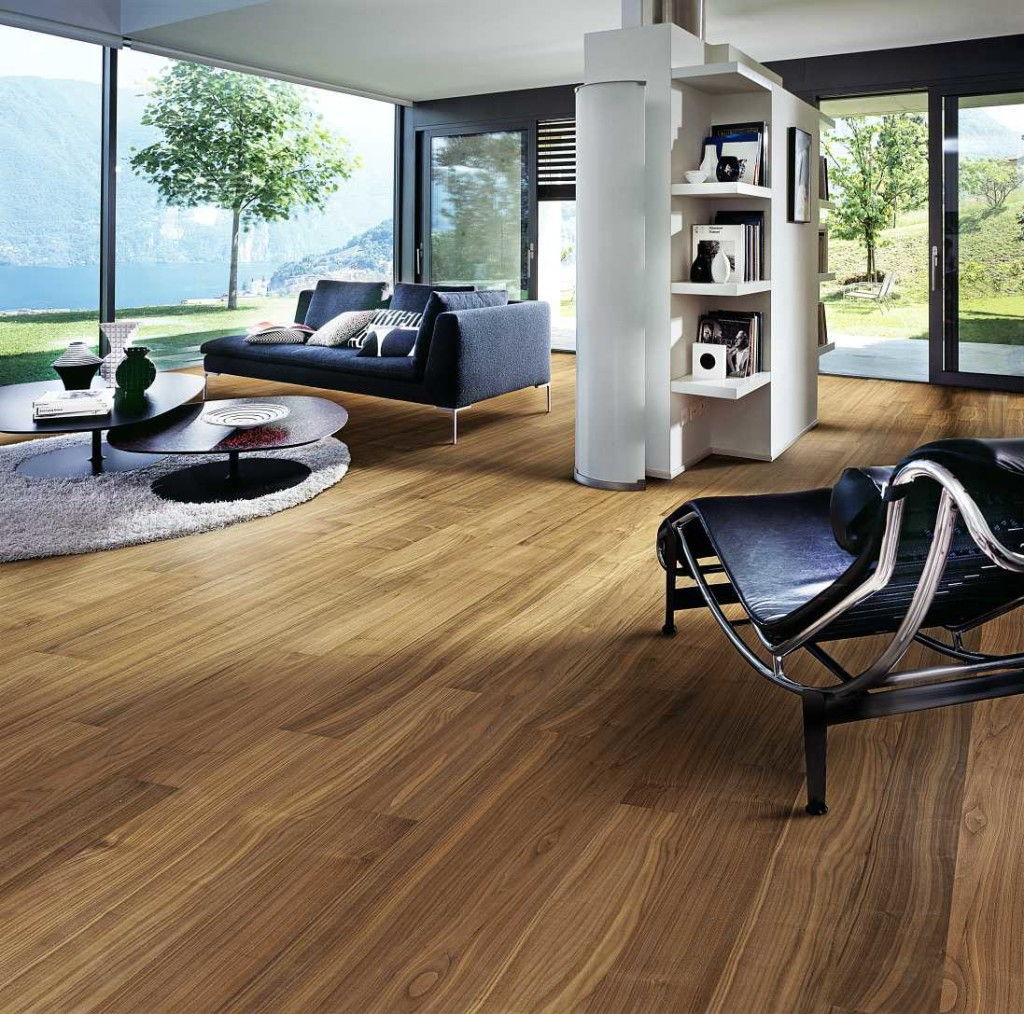

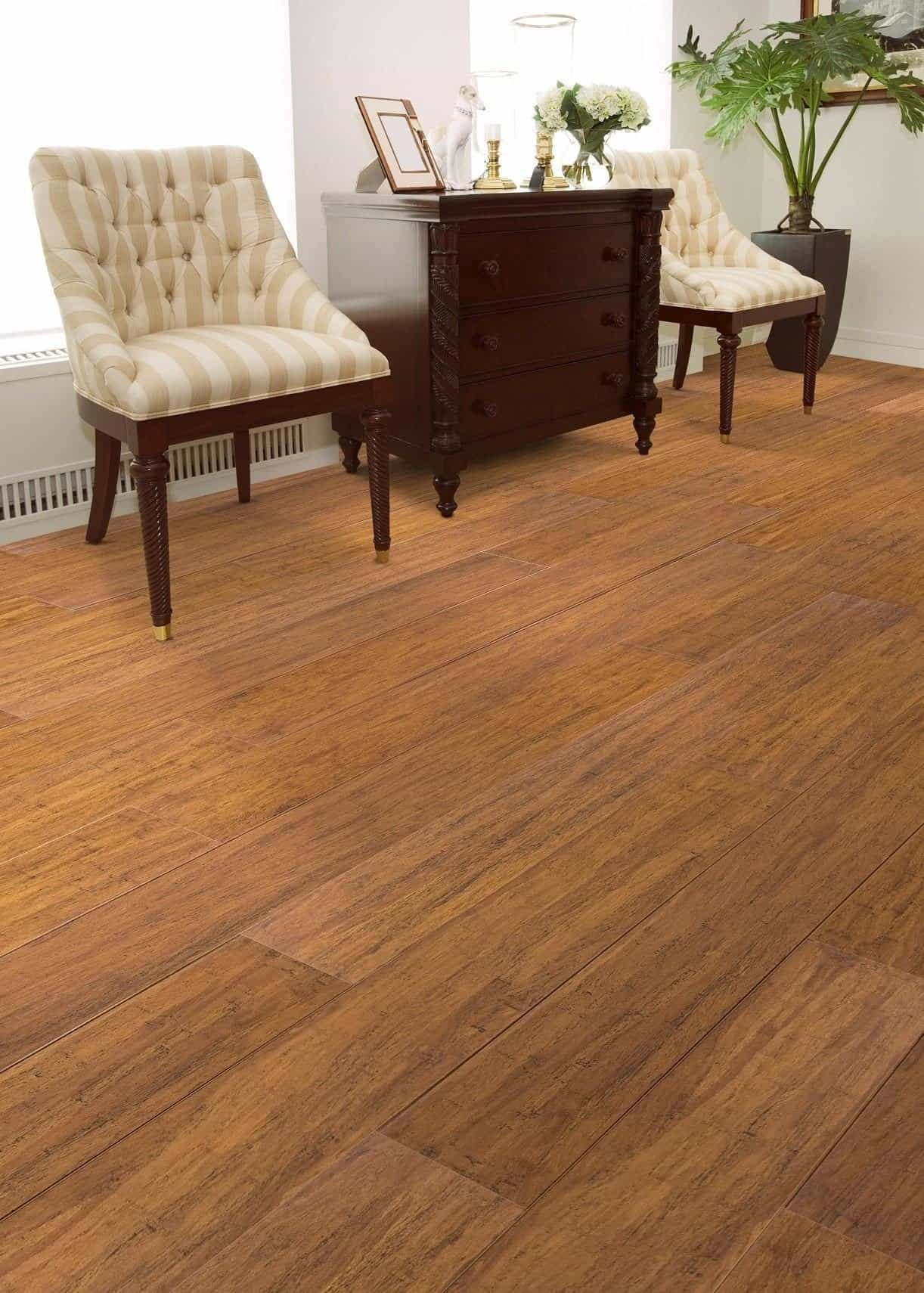
.png)
